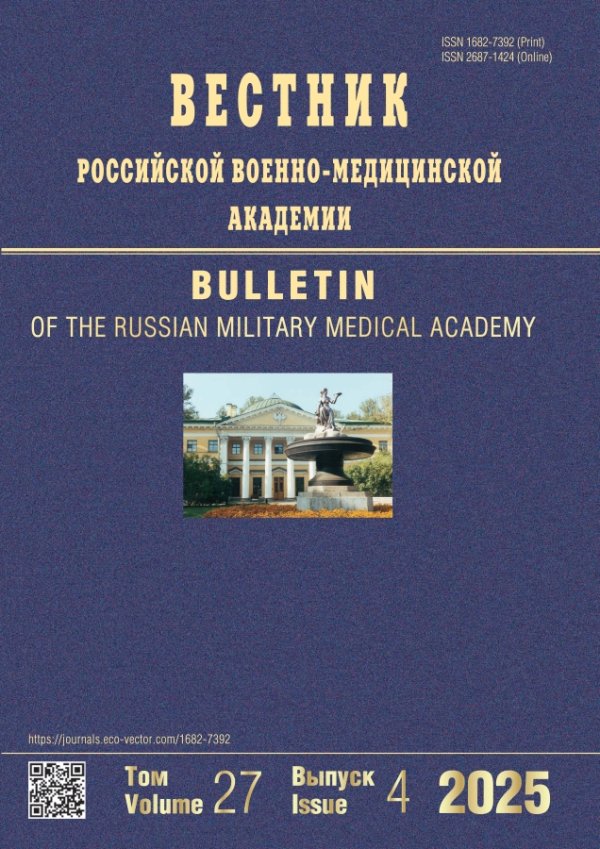Патогенетическая и прогностическая значимость молекулярных маркеров ремоделирования миокарда у пациентов, страдающих хронической сердечной недостаточностью
- Авторы: Лискова ЮВ1
-
Учреждения:
- Санкт-Петербург
- Выпуск: Том 20, № 1 (2018)
- Страницы: 19-23
- Раздел: Статьи
- URL: https://journals.rcsi.science/1682-7392/article/view/12195
- DOI: https://doi.org/10.17816/brmma12195
- ID: 12195
Цитировать
Полный текст
Аннотация
Полный текст
Открыть статью на сайте журналаСписок литературы
- Автандилов, Г.Г. Проблемы патогенеза и патологоанатомиче- ской диагностики болезней в аспектах морфометрии / Г.Г. Автандилов. - М.: Медицина. - 1984. - 285 с.
- Казаков, В.А. Морфологические аспекты послеоперационного ремоделирования левого желудочка у больных ишеми- ческой кардиомиопатией / В.А. Казаков // Артериальная гипертензия. - 2009. - Т. 15, № 3. - С. 376-383.
- Казаков, В.А. Корреляционные взаимосвязи гистоморфо- метрических показателей миокарда различных отделов сердца в норме и при хронической сердечной недостаточ- ности / В.А. Казаков [и др.] // Бюлл. сиб. мед. - 2009. - № 3. - С. 43-48.
- Калюжин, В.В. Ремоделирование левого желудочка: один или несколько сценариев? / В.В. Калюжин [и др.] // Бюлл. сиб. мед. - 2016. - Т. 15, № 4. - С. 120-139.
- Мареев, В.Ю. Национальные рекомендации ОССН, РКО и РНМОТ по диагностике и лечению ХСН (четвертый пересмотр) / В.Ю. Мареев [и др.] // Журн. серд. недостат. - 2013. - Т. 14, № 7. - С. 379-472.
- Непомнящих, Л.М. Регенераторно-пластическая недостаточ- ность сердца: морфологические основы и молекулярные механизмы / Л.М. Непомнящих, Е.Л. Лушникова, Д.Е. Се- менов. - М.: РАМН. - 1998. - 183 с.
- Осипова, О.А. Патоморфологические механизмы регуляции образования миокардиального фиброза у больных хрони- ческой сердечной недостаточностью на фоне ишемической болезни сердца / О.А. Осипова [и др.] // Журн. серд. недо- стат. - 2016. - Т. 17, № 5. - С. 357-364.
- Рекомендации ESC по диагностике и лечению острой и хро- нической сердечной недостаточности 2016 / Росс. кардиол. журн. - 2017. - Т. 141, № 1. - С. 7-81.
- Саликова, С.П. Морфологические аспекты ремоделирования сердца при хронической сердечной недостаточности / С.П. Саликова, А.А. Стадников, А.П. Семагин // Морфология. - 2002. - Т. 122, № 5. - С. 60-62.
- De Meyer, G.R. Role of autophagy in heart failure associated with aging / G.R. De Meyer, G.W. De Keulenaer, W. Martinet // Heart Fail. Rev. - 2010. - Vol. 15, № 5. - P. 423-430.
- Dorn, GW 2nd. Protein kinase cascades in the regulation of cardiac hypertrophy / G.W. 2nd Dorn, T. Force // J. Clin. Invest. - 2005. - Vol. 115, № 3. - Р. 527-537.
- Gerald, W. Apoptotic and non-apoptotic programmed cardiomyocyte death in ventricular remodeling / W. Gerald, I.I. Dorn // Cardiovas. Res. - 2009. - Vol. 81, № 3. - P. 465-473.
- Morishita, T. Association between matrix metalloproteinase-9 and worsening heart failure events in patients with chronic heart failure / T. Morishita [et al.] // ESC Heart Failure. - 2017. - Vol. 4, № 3. - Р. 321-330.
- Muslin, A.J. MAPK Signaling in Cardiovascular Health and Disease: Molecular Mechanisms and Therapeutic Targets / A.J. Muslin // Clin. Sci. (Lond). - 2008. -Vol. 115, № 7. - Р. 203-218.
- Nishida, K. p38α Mitogen-activated protein kinase plays a critical role in cardiomyocyte survival but not in cardiac hypertrophic growth in response to pressure overload / K. Nishida [et al.] // Mol. Cell. Biol. - 2004. - Vol. 24, № 24. - P. 10611-10620.
- Schirone, L.A Review of the Molecular Mechanisms Underlying the Development and Progression of Cardiac Remodeling / L.А. Schirone [et al.] // Oxidative Medicine and Cellular Longevity. - 2017. - Vol. 2017, ID 3920195. - Р. 1-16.
- Spinale F.G. Matrix Metalloproteinases: Regulation and Dysregulation in the Failing Heart / F.G. Spinale // Circ. Res. - 2002. - Vol. 90, № 5. - Р. 520-530.
Дополнительные файлы







